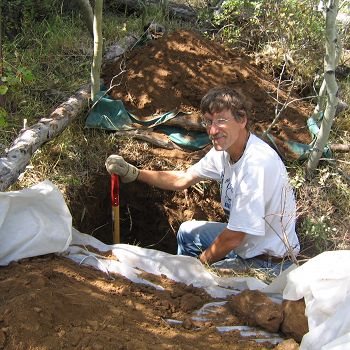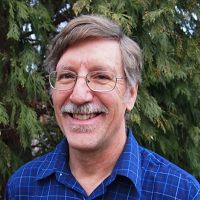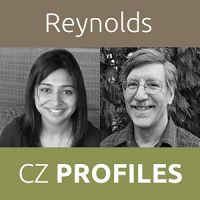Critical Zone Profile – MARK SEYFRIED (soil scientist, USDA)
Raised in the San Joaquin Valley of California, Mary Seyfried received a B.S. in Soil Science in 1977 from the University of California, Berkeley. He worked mapping soils with the Soil Conservation Service in New Mexico for three years while also taking courses at the University of New Mexico. He then obtained his M.S. in Soil Genesis and Classification and a Ph.D. in Soil Physics in 1987 from University of Florida. His research included water and nutrient cycling in tropical agroecosystems. In 1988, Seyfried started work as a soil scientist with the Agricultural Research Service in Boise, Idaho at the Reynolds Creek Experimental Watershed and now Critical Zone Observatory (CZO).
"My work integrates soil processes in to our understanding of the larger ecosystem we are all part of." - Mark Seyfried
Soil is a primary interface between biotic and abiotic processes, yet the soil environment and the impacts and variability of soil properties are poorly represented in our larger ecosystem models. I have worked on instrumentation, extensive measurement, monitoring and modeling towards this end.
My work pertains to what is generally termed “ecosystem services.” More specifically in the context of western ecosystems, vegetative productivity and water supply. We depend upon vegetation production for food, and some of our most obvious management options involve manipulations of vegetation. Water is inextricably linked to the vegetation, where the overall water balance describes both water supply and vegetative production. Quantifying this relationship is critical for land management. These issues are also highly topical in the larger research community. Gaps in our understanding have been exposed as we have been exposed to extreme weather and a changing climate.
Critical Zone (CZ) research encompasses the kinds of ecosystem services and processes I described (and many others) but in an explicitly comprehensive, multi-disciplinary manner. This kind of approach is needed for us to make substantive progress in understanding this “thing” we call the critical zone. CZ science is inherently multi-disciplinary because it is understood that nature doesn’t recognize disciplinary boundaries like “hydrology” or “geology” or “plant physiology.” The establishment of specific observatories is key for this research approach because they provide the common “facilities” for research.
The CZO network provides me access to a breadth of expertise from scientists around the world.
Though new to the program, I have already benefited from geophysical research being conducted as part of a coordinated cross-CZO program. This work has revealed much new information regarding relatively deep structures that influence and conduct water within the Reynolds Creek Watershed. This has been a subject of much speculation in the past, but we now have data. This kind of research really requires expertise and equipment beyond most scientist’s “tool box” but, as part of the CZO community, has been accessible. To me, this is an example of how concentrated study of specific observatories can be uniquely beneficial. I am currently working to provide spatial modeling data sets that will be similarly useful for testing and developing scientific models.
The CZO’s have a fairly unique role to play in natural resource management because they encompass relatively large spatial domains. This is fundamentally different from most previous research that focused on plots or hillslopes which, though valuable, was usually not directly applicable because most management takes place on landscapes, which integrates numerous plots and hillslopes. CZO’s explicitly investigate spatial domains and hence the variations within those domains. For the application of grazing management, for example, it is important to understand variations in productivity as it is affected by topography, elevation, soils, etc, which result in highly variable productivity but need to be managed as a whole.
Mark Seyfried, USDA Soil Scientist
Mark Seyfried.
HydraProbe Installation
Mark Seyfried.
News Category:
PEOPLE
Discipline Tags and CZOs
Soil Science / Pedology
Hydrology
Modeling / Computational Science
Reynolds
Related News
Explore Further







